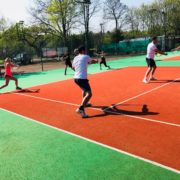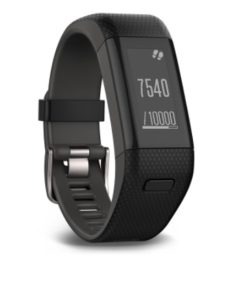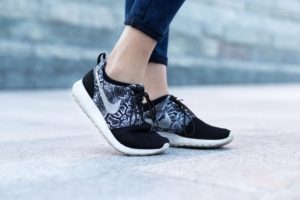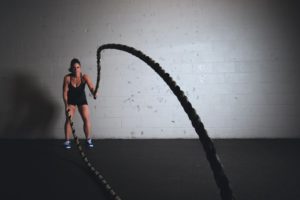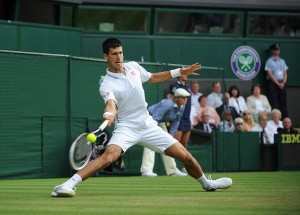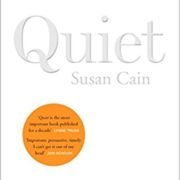For the last several months I have been busy recruiting new S&C coaches and training them up. I have said many times before that I interview for character first and credentials second. I’m more interested in what kind of person you are than what you know. Let me be clear I am not saying knowledge of S&C training theory and practice isn’t essential, because it is. But let’s face it, how many applicants for part-time and full-time S&C coaching roles aren’t coming with at least a degree in a sports related subject these days.
So it then comes down to how a person differentiates themselves from the competition, and that opportunity comes when I get them to do the practical part of the interview. It’s about how they create an environment that inspires the athletes to listen, learn and have fun!
It also comes down to the values of the coach- what is important to them in a role and how do they fit with my company and my vision.
During my recent holiday in April I read several books and one that recently captured my interest was ‘QUIET’ by Susan Cain.
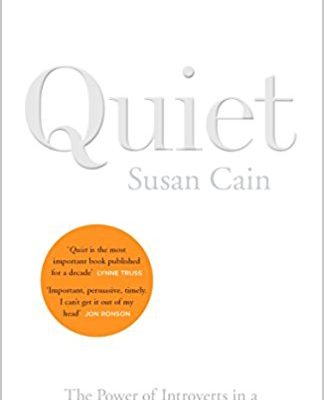
Do Extroverts make the Best Coaches?
I never really enjoyed learning about psychology and sports psychology at University. Perhaps it was the lecturer I didn’t like. In recent years it has become one of my favourite topics to study. I first got into psychology through a former colleague of mine Helen Emms, who continues to be a mentor to the present day. We used to work together at Gosling Tennis Academy. I also found the ‘’Chimp Paradox’’ work of Dr Steve Peters interesting. However, I’ve always found the personality research a bit abstract and I never really engaged in it any more than astrology- that is supposed to tell me something about my traits based on my birth date!
Below is a summary of some of the key take home messages from reading the book:
Extroverts and Introverts
This book was interesting because it wasn’t written by a psychologist- it was written by a lawyer who was interested to learn about how researchers define introversion and extroversion. Early 20th century researchers thought they were central building blocks of personality. Contemporary researchers still can’t agree on an all-purpose definition.
Introverts are Thinkers- quiet and cerebral
- Introverts- internal world of thoughts and feelings
- Extroverts- external life of people and activities
They differ in the level of outside stimulation that they need to function well.
Introverts feel just right with less stimulation => sip wine with a close friend or read a book. They often work more slowly and deliberately. They like to focus on one activity at a time and can have mighty powers of concentration. They are relatively immune to the lures of wealth and fame.
But they do have a sensitivity to novelty not just people! More on this later.
Extroverts enjoy the extra bang that comes from activities like meeting new people, skiing slippery slopes and cranking up the stereo. They tend to tackle assignments quickly. They make fast (sometimes rash) decisions, and are comfortable multi-tasking and risk taking. They enjoy the thrill of the chase for rewards like money and status.
‘’Introverts may have strong social skills and enjoy parties and business meetings, but after a while they wish they were home in their pyjamas.’’
Introversion is not the same as shyness. The shy person is afraid to speak up, while the introvert is simply overstimulated.
Introverts=>Leadership executed with quiet competence. Inventing, researching, caring- they are not alpha roles but the people who play them are role models all the same.
Rise of the alpha status
The increasingly competitive society of 1920s America went as far as labelling social anxieties as an inferiority complex (Alfred Alder). In the western world (North America and Europe) we seem to celebrate extroverts as the kinds of personalities that will get on in life and do well in the world. Shy or retiring types could be left behind it seems.
Quiet is seen as wise in Asian cultures but western cultures value charisma!! You need style as well as substance.
The Myth of Charismatic Leadership
Salesmanship as a Virtue:
Unleashed power comes from ‘’high energy’’ according to Tony Robbins
Salesmanship: Act like an extrovert vs believe in what you are pitching
Zero correlation between extroversion levels and cold calling process. Persistence vs buzz. Great salesman can be successful without a buzz if they are passionate about what they are selling and can articulate that through communication.
Power of persistence- don’t let others make you feel as if you have to race.
Vocal Leadership:
Quick and assertive answers (Harvard Business School) vs. quiet slow decision making.
We perceive talkers as smarter than quiet types. We see talkers as leaders.
Getting your way vs. going the right way- just because you got your way, doesn’t mean it’s the right way!
Good talker vs good ideas- If the idea is good people shift. Not every person who is a great talker has great ideas!
Giant egos vs. Giant ideas
Question: Is it best to make decisions in the face of incomplete information. Or wait to get as much info as possible? By hesitating do you risk losing other’s trust and momentum?
If assertive people tend to get their way, then it’s a useful skill for leaders whose work depends on influencing others. Decisiveness inspires confidence, while wavering can threaten morale.
(However,) ‘’We don’t need giant personalities to transform companies. We need leaders who build not their egos but the institutions they run.’’ (Jim Collins)
Quiet Persistence
Leadership roles in public domain (suit extroverts) vs theoretical and aesthetic fields (suit introverts)
In the opening chapters she describes a woman who is mild-mannered, tends to ask questions, never raises her voice, is constructive and makes simple queries by asking questions.
Introverts do better on intellectual tasks- disinclination to charge ahead.
Social Connectors
‘’Connecting people to fix the world over time is the deepest spiritual value you can have’’- Craig Newmark (Founder Craigslist) – modest, cerebral systems engineer at IBM for 17 years.
SOCIAL connectors- chatty, outgoing, spellbinding vs. SOCIAL MEDIA leadership (digital communication- establish a presence online and THEN extend these relationships into the real world)
Role to play as a coach? To be sociable- to be more extroverted as a social connector?
Is Temperament Destiny?
Temperament is hard wired genetic behaviour and emotional patterns that are inborn. Personality emerges after cultural influence and personal experience
Temperament is the foundation and personality is the building.
Introverts have Reactive nervous system– more sensitive to their environments in concert with environmental factors from personal experience and inborn temperament. Anxious side of the limbic brain- old brain. It also has a greedy side associated with reward-seeking cravings associated with extroverts.
They tend to be philosophical or spiritual, rather than materialistic or hedonistic. They dislike small talk- at least at the start of a conversation. They love music, nature, art, physical beauty.
Rubber band theory of personality- we can stretch our personality.
Change your environment and act on your own free will. We can stretch our personalities but only up to a point. We have free will and can use it to shape our personalities. It can take us far but it cannot carry us infinitely beyond our genetic limits.
Free Trait theory
We have fixed traits but we also have free traits where we can and do act out of character in the service of core personal projects. In other words introverts are capable of acting like extroverts for the sake of work they consider important.
Especially relevant for introverts living under the Extrovert Ideal
I coach with passion because it nourishes my core personal project/mission to maximise my athletes’ potential by raising standards in coaching excellence. Many people especially those in leadership roles engage in a certain level of pretend-extroversion. It can be effective if used judiciously but disastrous if overdone. You don’t want to act out of character too much- and create as many restorative niches as possible in your life.
Summary:
Like the nature or nurture debate related to physical attributes we can summarise that we can stretch our personalities but only up to a point. We have free will and can use it to shape our personalities. It can take us far but it cannot carry us infinitely beyond our genetic limits.
Leadership roles vary. Some roles are more suited to extroverts and others to introverts.
I personally think that the role of an S&C coach can vary according to the environment we are working in. For example, one-to-one versus groups, adults versus children, males versus females, Westerners versus Asian etc. For many of the roles that I recruit for that involve working with children I do tend to look out for the extrovert characteristics. These are the coaches that seem to thrive in social situations and make everyone feel at ease. They have charisma, and put a smile on everyone’s face.
But this book has confirmed for me that everyone is capable of stretching their personalities and if you’re an introvert you might need to show some pretend-extroversion. I now understand why I get so exhausted by my role. I’m an introvert at heart but when I’m coaching I fall into the role of the performer who is passionate about helping my athletes and coaches improve and I do tend to use a ‘high energy’ approach to grab attention!!
Where I am next presenting?

Speed, Agility & Quickness Training for Sports Workshop
Dates: 3rd June 2018 09:00AM-15:00PM Location: Gosling Tennis Academy, Welwyn Garden City, AL8 6XE
Book your ticket HERE
Since you’re here…
…we have a small favor to ask. APA aim to bring you compelling content from the world of sports science and coaching. We are devoted to making athletes fitter, faster and stronger so they can excel in sport. Please take a moment to share the articles on social media, engage the authors with questions and comments below, and link to articles when appropriate if you have a blog or participate on forums of related topics. — APA TEAM
=> Follow us on Facebook
=> Follow us on Instagram
=> Follow us on Twitter

